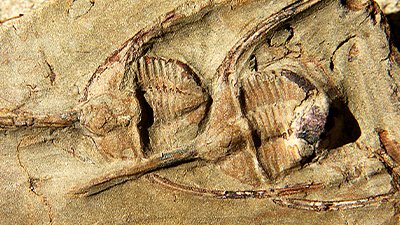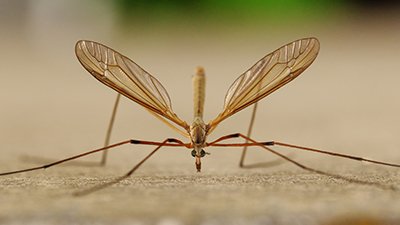
Plesiosaur Fossils Suggest Sea Monsters Gestate Early in Life
Plesiosaur harbors a paleo-obstetrical surprise.
News Source
Stored in the basement of a Los Angeles museum for twenty years, a rock encased fossilized plesiosaur waited to hatch her surprise. When Luis Chiappe and Frank O’Keefe began chiseling, they found a set of large bones and a set of miniatures.
As they sorted the bones, they realized that the smaller bones were of the same species but incompletely ossified, a finding typical of a fetus. Since there were no bite marks on the smaller bones to suggest the baby had been lunch, O’Keefe and Chiappe were convinced they had a pregnant plesiosaur.
Another marine reptile, the ichthyosaur, has been memorialized in the fossil record in the act of giving birth, confirming that those reptiles did bear live young. But “This is the first known pregnant plesiosaur. It demonstrates that the plesiosaur gives live birth and did not crawl out on land [to lay eggs]. It puts this 200-year mystery to rest,” said Dr. O'Keefe. “The really interesting thing is how big this bouncing baby is. It's really large by reptilian standards, by human standards, by any standards you use.”
The mother is 15.4 feet long, but her 5-foot long fetus was “not ready to be born; it’s about two-thirds done,” O’Keefe explained. “It would have been a couple meters [6.5 feet] long by the time it was born.”
The extreme immaturity of the flippers suggests to the researchers that the baby plesiosaur would have still required maternal care at birth.
The extreme immaturity of the flippers suggests to the researchers that the baby plesiosaur would have still required maternal care at birth. “That's what really strikes you about this baby, how not ready for prime time it is,” O'Keefe added. While suspecting that this plesiosaur would have nurtured its baby as marine mammals and some lizards do, he acknowledges, “When you get right down to it, behaviour doesn't fossilise, so we are stuck trying to make these inferences using modern animals where we can observe their behavior.”1
Evolutionists believe that marine reptiles, like marine mammals, evolved from terrestrial ancestors. However, the suggestion that both also evolved social behavior is a bit of a leap for some paleontologists. Others think it was possible, saying the Jurassic and Cretaceous Periods had more stable environments than the earlier Triassic, allowing an evolving species to survive despite bearing only one offspring.
From a biblical perspective, we need to realize that all of these layers in the geologic column speak of the very unstable time of the global Flood. Those layers don’t tell us the story of how reproductive strategies evolved. The fossil record also does not reveal whales or plesiosaurs evolving from land-based ancestors. God created the swimming creatures on the fifth day of Creation week, each fully equipped to swim and to reproduce after its kind. We know that whales nurture their young. Based on this pregnant plesiosaur, we now can say that at least some plesiosaurs bore live young. And if they nurtured those young, we are confident that behavior was also instilled by their Creator, not evolved due to a stabilizing Cretaceous world.
Further Reading
For More Information: Get Answers
Remember, if you see a news story that might merit some attention, let us know about it! (Note: if the story originates from the Associated Press, FOX News, MSNBC, the New York Times, or another major national media outlet, we will most likely have already heard about it.) And thanks to all of our readers who have submitted great news tips to us. If you didn’t catch all the latest News to Know, why not take a look to see what you’ve missed?
(Please note that links will take you directly to the source. Answers in Genesis is not responsible for content on the websites to which we refer. For more information, please see our Privacy Policy.)
Footnotes
- Jennifer Carpenter, “Fossil ‘Suggests Plesiosaurs Did Not Lay Eggs’,” BBC News, August 12, 2011, http://www.bbc.co.uk/news/science-environment-14447187.
Recommended Resources

Answers in Genesis is an apologetics ministry, dedicated to helping Christians defend their faith and proclaim the good news of Jesus Christ.
- Customer Service 800.778.3390
- Available Monday–Friday | 9 AM–5 PM ET
- © 2026 Answers in Genesis





